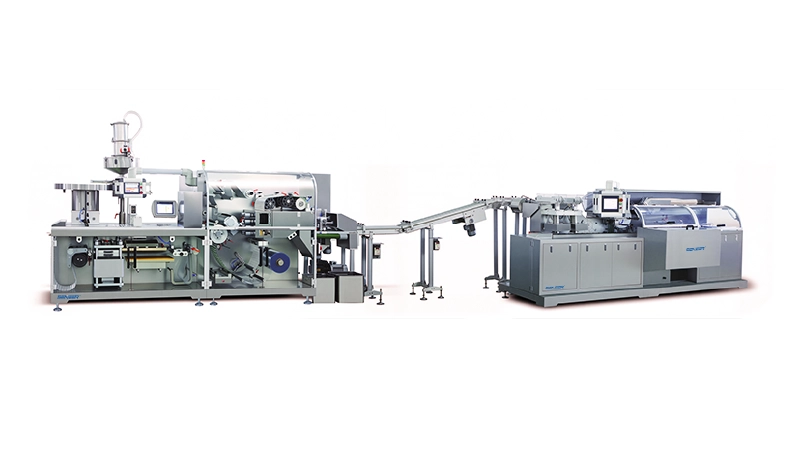Purified Water System
Purified water system: precise purification, pure and worry-free, meeting the most stringent water standards in the pharmaceutical industry, providing efficient and stable guarantee for your production process
Introduction of Purified Water System
Purified water system is a type of equipment specially used to produce and treat high-purity water. It is widely used in pharmaceuticals, biotechnology, food and beverages, and other industries that have extremely high water quality requirements. It removes impurities, organic matter, microorganisms and ions from water through multi-stage purification processes, such as pretreatment, reverse osmosis, electrodeionization (EDI) and ultraviolet sterilization, ensuring that water quality meets industry and regulatory standards, such as the United States Pharmacopeia (USP) or European Pharmacopoeia (EP) requirements. Purified water systems ensure safety and product quality during production while optimizing resource and energy consumption management.
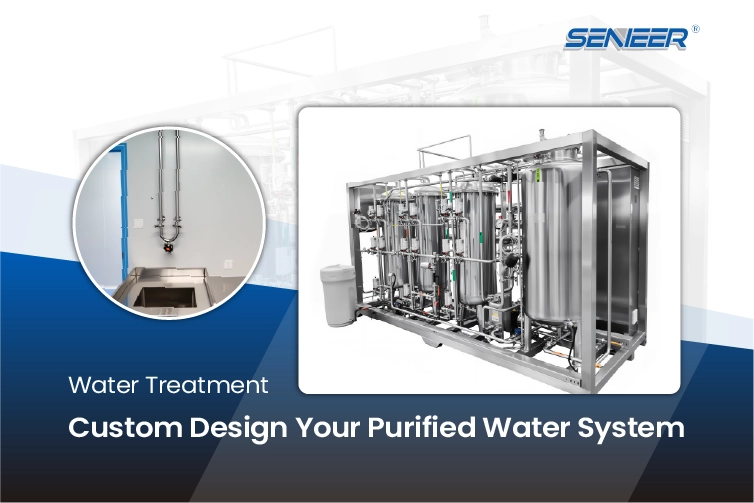
Different Types Of Purified Water System
In industries such as pharmaceuticals and food that have strict requirements on water quality, choosing the right purified water system is crucial. To meet the needs of different scales and processes, Senieer purified water systems are available in a variety of models, ranging from laboratory to large-scale industrial applications, ensuring the efficient and reliable delivery of high-purity water.
Choose Your Purified Water System
Purified water systems play a vital role in modern industry, not only ensuring product safety and quality, but also improving production efficiency. Since various industries have different requirements for water quality, the applications of purified water systems also have their own characteristics. Next, we will explore the diverse applications of these systems in pharmaceutical, food, cosmetics and other industries and the unique advantages they bring.
The efficient operation of purified water systems relies on a series of complex and sophisticated purification processes that ensure water purity meets strict industry standards. From initial pretreatment to final fine purification, every step is crucial. Next, we will deeply analyze the main process flow of the purified water system and reveal its unique advantages in providing high-quality water sources.
Guidelines For Purified Water System
In a high-standard production environment, the purified water system is a critical infrastructure to ensure product quality and process safety. To help you better understand this technology, we’ve written this comprehensive guide covering its definition, how it works, key features, applications of different models, and their important role in various industries. Next is the core elements of the purified water system in detail and help you choose the most suitable solution.
Introduction
A Purified Water System is an advanced water purification setup designed to produce high-quality purified water, primarily for industries that require strict water quality standards, such as pharmaceuticals, biotechnology, cosmetics, and food and beverage production. It employs a series of purification processes, including pretreatment, reverse osmosis (RO), deionization, and ultraviolet (UV) sterilization to remove impurities, organic matter, microorganisms, and ions from the water. These systems ensure compliance with regulatory standards, such as those set by the United States Pharmacopeia (USP) or the European Pharmacopoeia (EP), making them essential for critical applications that demand ultra-pure water to maintain product safety and consistency.
Features Of Purified Water System
Purified water systems provide strong support for production and operations in various industries.
Highly efficient purification capability
The purified water system adopts multi-stage purification processes, such as pretreatment, reverse osmosis, electrodeionization (EDI) and ultraviolet sterilization, etc. to ensure that water quality meets or even exceeds industry standards. This high-efficiency purification capability can remove impurities, organic matter, microorganisms and ions in water, providing an absolutely pure water source and suitable for various harsh production environments.
Automation control system
Advanced automated control technology enables precise management of the entire purification process, including water quality monitoring, flow adjustment, system fault detection, etc. Users can view the running status in real time through the intelligent interface, reducing manual intervention and the risk of errors, and greatly improving work efficiency and safety.
Energy-saving and environmentally friendly design
The purified water system is designed with energy saving and environmental protection in mind, achieving lower operating costs by optimizing water circulation and reducing energy consumption. For example, the reverse osmosis process recycles wastewater, reduces water waste, and is in line with the concept of sustainable development, saving companies money while reducing environmental impact.
Stable and reliable water supply
The system can maintain stable water quality and water output during long-term continuous operation, and is suitable for production processes with large demand for purified water. The equipment is equipped with multiple safety mechanisms to ensure stable water supply under extreme conditions and avoid production losses caused by water supply interruptions.
Modular and customized structure
The flexible modular design facilitates the installation, maintenance and expansion of the system, and can be configured and upgraded according to the specific needs of customers to meet production needs of different scales. This customized solution allows companies to have greater flexibility in initial investment and future expansion, reducing long-term costs.
Comply with international water quality standards
The purified water system strictly follows internationally recognized water quality standards, such as the United States Pharmacopeia (USP), the European Pharmacopoeia (EP) and GMP regulations to ensure the safety and stability of water quality, meet the compliance requirements of pharmaceutical, biotechnology, food and beverage and other industries, and ensure product quality and safety.
Low maintenance requirements
The equipment design focuses on ease of operation and maintenance, and the system accessories are highly durable, reducing the trouble of frequent replacement and maintenance. The automated cleaning function reduces the complexity and cost of manual maintenance, ensuring that the system operates efficiently while maintaining a long service life.
Adapt to the needs of multiple industries
Purified water systems can be used in many industries, from pharmaceuticals and cosmetics to food and chemical industries. Each industry chooses the appropriate configuration according to its own water quality requirements. The system’s versatility allows it to flexibly respond to different process needs and provide enterprises with reliable water solutions.
How Does Purified Water System Work?
The purified water system ensures that water quality reaches strict standards through a series of precise purification processes to meet the needs of pharmaceutical, food, cosmetics and other industries for high-purity water. Its working principle usually involves the combined use of multiple technologies to ensure that impurities, microorganisms and harmful substances in the water are completely removed. The following is the core working principle of the purified water system.
Primary filtration (pre-treatment)
The first process in a purified water system is primary filtration, usually using a sand filter, activated carbon filter or multi-media filter. The main purpose of this step is to remove large particulate matter, sediment, residual chlorine and organic matter from the water. This stage ensures that the subsequent filtration process will not be interfered by impurities and improves the overall purification efficiency.
Reverse Osmosis (RO)
Reverse osmosis is a key link in the water purification system. It effectively removes dissolved salts, metal ions, organic matter and microorganisms in the water through a semipermeable membrane. The raw water passes through the high-pressure action of the reverse osmosis membrane, and only pure water passes through, and most of the pollutants are effectively intercepted. This process greatly improves the purity of water and is a core step in water quality control.
Deionization (EDI)
Electrodeionization (EDI) uses an electric field to further remove ions (such as calcium, magnesium, sodium, chlorine, etc.) in water. EDI technology combines ion exchange resin and electrolysis principles to continuously remove electrolytes in water and produce ultrapure water. This step ensures a higher standard of water quality and is suitable for applications requiring extremely high water quality.
Ultraviolet sterilization (UV)
Ultraviolet sterilization is an effective means to eliminate microorganisms, bacteria and viruses in water. UV irradiation destroys the DNA structure of microorganisms and prevents them from multiplying in water. This step ensures that the water does not contain any harmful organisms after it has been treated with reverse osmosis and deionization.
Post-processing and storage
After the water undergoes a series of purification processes, the system is usually equipped with a water storage tank to ensure stable water supply. The water in the water storage tank is re-filtered, microporous filtered or kept ultraviolet sterilized to ensure that the quality of the stored water is not polluted and is maintained in the best condition.
Automatic monitoring and management
Modern purified water systems are usually equipped with intelligent control panels that monitor key parameters such as water quality, flow rate, and temperature in real time. The system can automatically adjust operating conditions to ensure that every link is operating at its best, while reminding users to perform maintenance to ensure water quality stability and equipment operation efficiency.
Application
Different models of purified water systems have different characteristics and needs when used in various industries. Choosing the appropriate model can ensure efficient purification of water quality and meet the requirements of specific industries.
1. Laboratory type purified water system
- Application areas: suitable for scientific research, laboratories, schools and small-scale production.
- Features: Small size, easy to install, suitable for experimental work with extremely high water quality requirements, and can provide a small amount of but high-purity water. Usually used in scientific research experiments, drug analysis, life science research and other fields.
- Industry application:
Pharmaceutical industry: Used in drug research and quality control experiments to ensure the purity of water used in the experiment.
Biotechnology industry: used in cell culture, PCR reactions, chemical analysis and other applications that have strict requirements on water quality.
Chemical analysis: In experiments such as gas chromatography and liquid chromatography, high-purity water is required for sample dissolution and dilution.
2. Small purified water system
- Application areas:Suitable for small pharmaceutical factories, food processing plants and chemical companies.
- Features: It has high water treatment capacity and can meet the water needs of small-scale production. It can continuously and stably provide high-quality water while occupying a small space and having low maintenance costs.
- Industry application:
Pharmaceutical industry: used in small-scale production processes to ensure that production water meets GMP standards and ensure product quality.
Food and beverage industry: used in the production of beverages and food additives to ensure that the water source of the products is clean and pollution-free.
Laboratory/Small and Medium Enterprises: Suitable for the production of pharmaceuticals, cosmetics, health care products and other products that require smaller processing volumes.
3. Medium-sized purified water system
- Application fields: Suitable for medium-sized pharmaceutical factories, food factories and other enterprises that require large water treatment capacity.
- Features: Provides stable water quality and large-capacity water source, suitable for parallel operations of multiple production lines. The system is usually equipped with intelligent control, which can better cope with the needs of medium-scale production.
- Industryapplication:
Pharmaceutical industry: It is widely used in medium-sized pharmaceutical factories and is used in links with strict water quality requirements in the production process, such as dissolving pharmaceutical raw materials, flushing equipment, etc.
Food industry: suitable for medium-sized beverage or canning processing plants to ensure water safety and hygienic standards during the production process.
Cosmetics industry: In the formulation of cosmetics, purified water is one of the basic raw materials to ensure the stable quality of each batch of products.
4. Large purified water system
- Application areas:Suitable for large pharmaceutical factories, large-scale food production and other enterprises that require large amounts of purified water.
- Features: Strong processing capacity, stable operation, can work around the clock, meet the water needs of high-volume production lines, usually have higher automation and monitoring functions, and reduce manual intervention.
- Industry application:
Pharmaceutical industry: widely used in large pharmaceutical factories to provide purified water that meets international standards (such as USP, EP) for dissolution, cleaning and preparation in pharmaceutical processes.
Chemical industry: used in reaction and cooling processes in the production of chemicals and fertilizers.
Electronic industry: Used in electronic manufacturing to clean electronic components and remove surface impurities and dust.
Food and Beverage Industry: Widely used in large food processing plants and beverage production plants for production, washing, ingredients and packaging.
Do your factory need purified water system? If you want to learn more information about it, please feel free to contact us.
Choose Your Interested Production Line
Bottle Filling Line
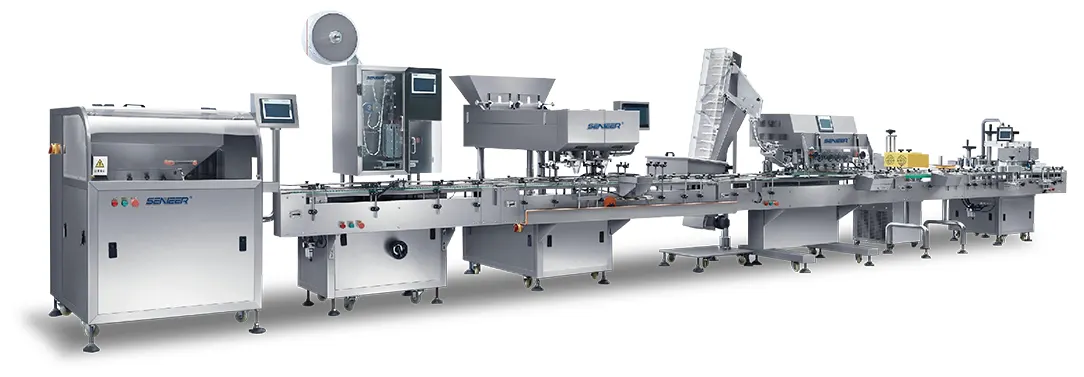
Granulation Line
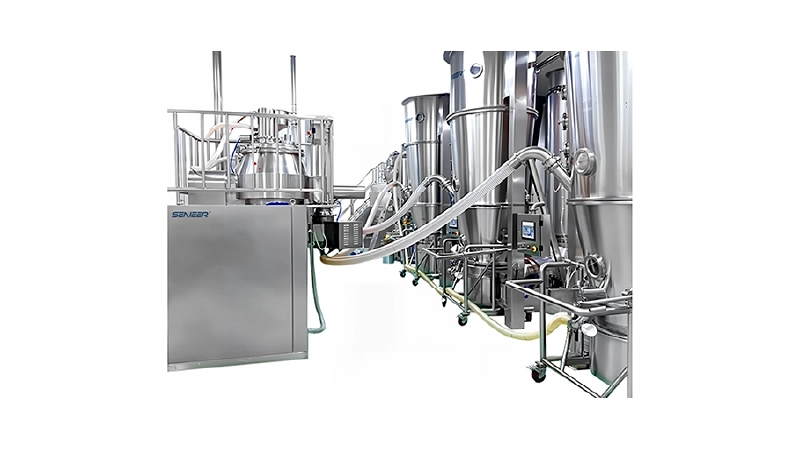
Blister Packaging Line
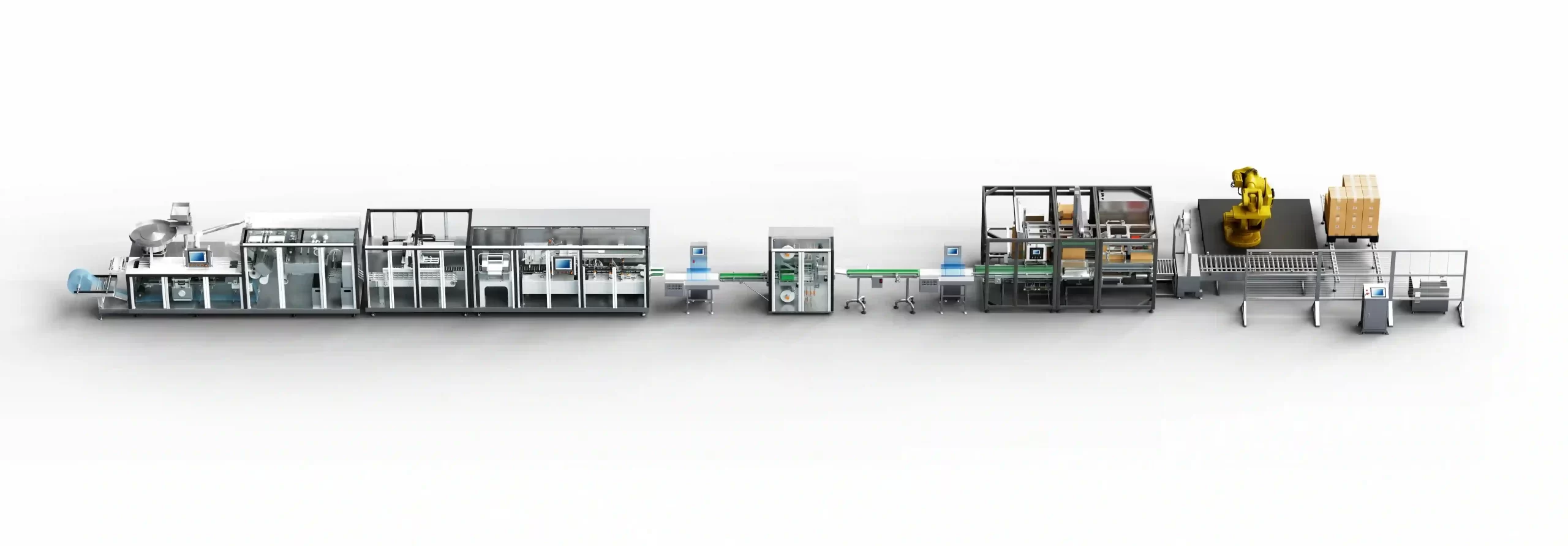
Powder Filling Line








